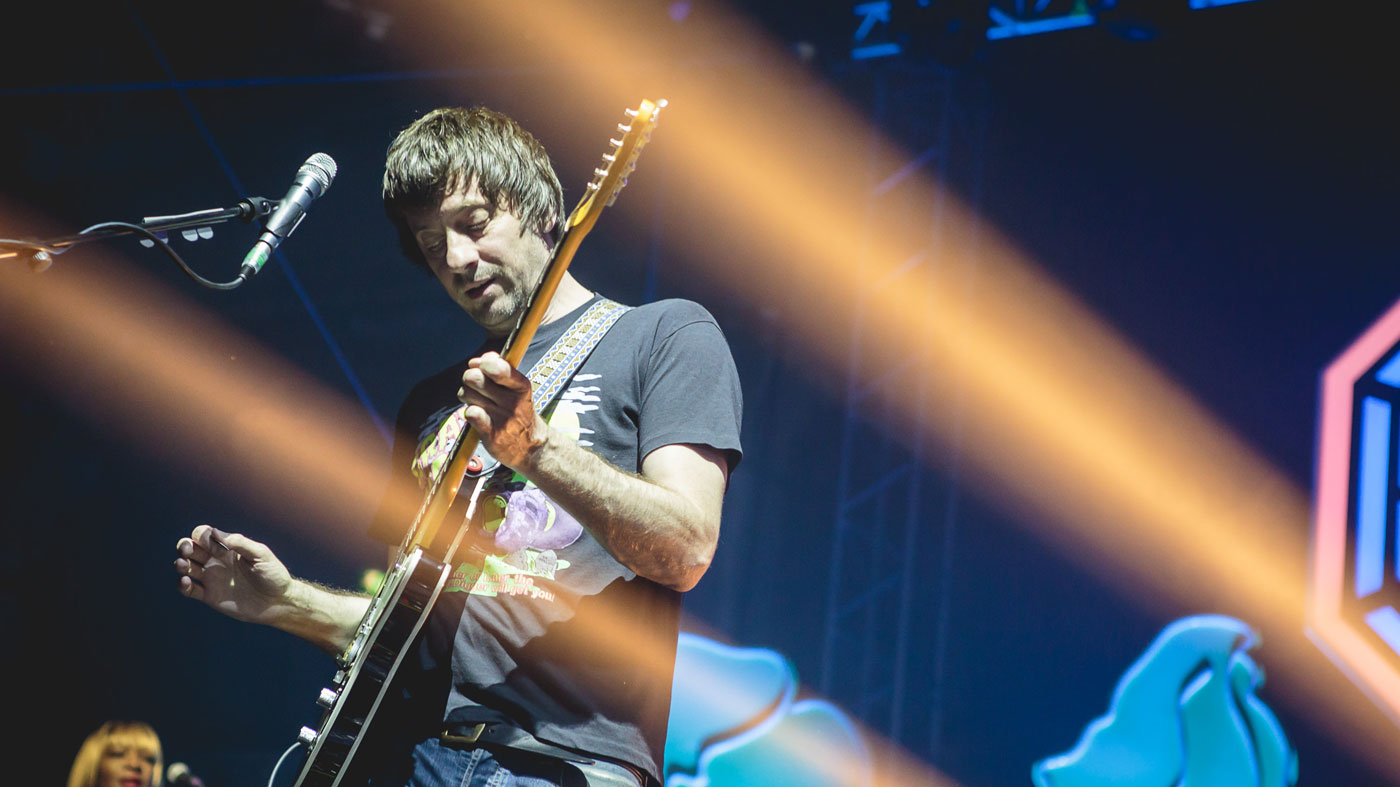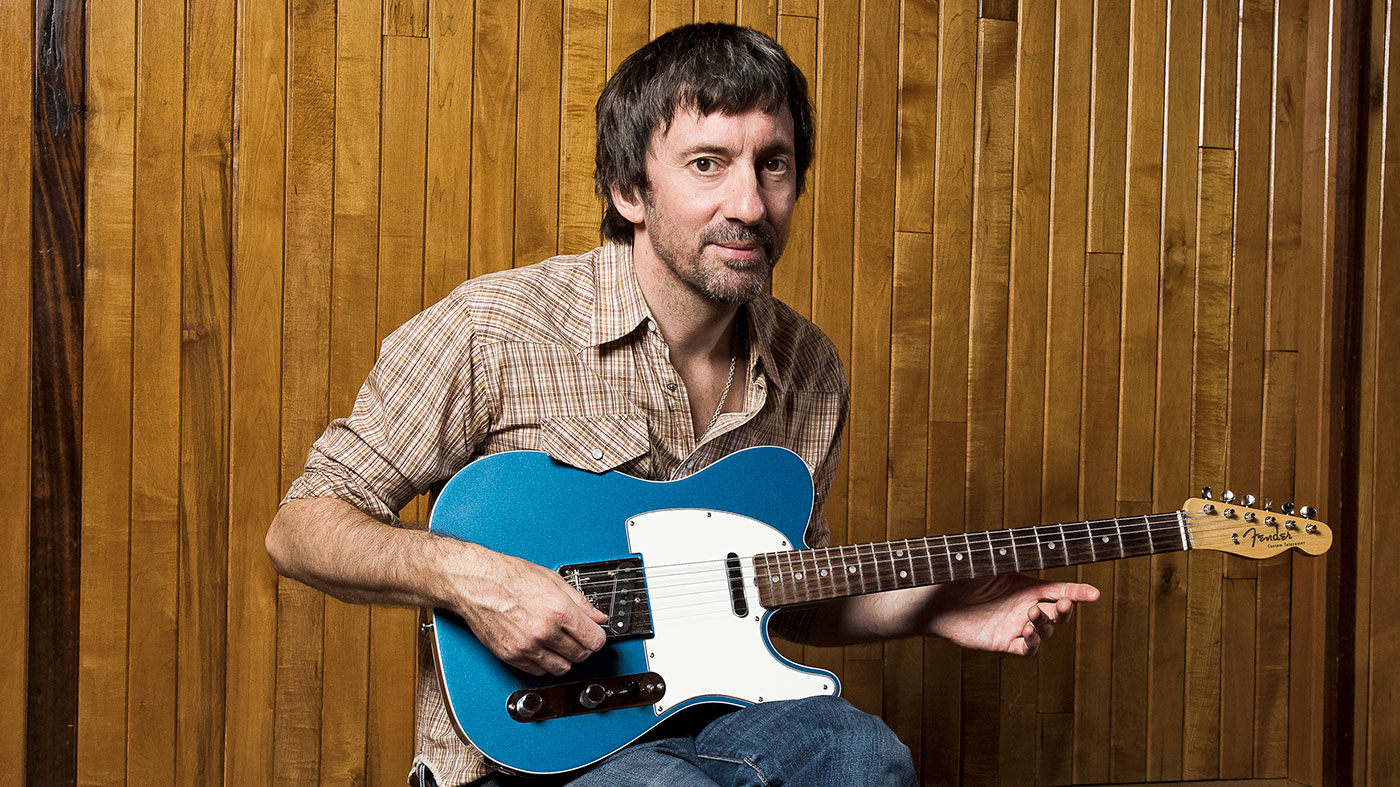5 songs guitarists need to hear by… Blur
Blur’s Graham Coxon is one of the most unpredictable and pioneering British players of the last 30 years – so let’s hear five examples of his innovative style in action

With his uncanny knack for fusing the punky and abrasive with the unusual and idiosyncratic, Graham Coxon’s ambitious experiments have driven Blur’s sound over eight studio albums – and outside of Blur, he’s also racked up eight solo albums, beginning with The Sky Is Too High in 1998, plus three soundtracks, including two for the TV series The End Of The F***ing World.

Video: Graham Coxon talks telecasters
Coxon has described his own approach to guitar playing as ‘outsider art’, and insists he’s ‘a soundmaker, not a guitar player’: producer Steven Street has said ‘he plays with his feet as much as his hands’, and of his Blur approach, Coxon told The Independent: “I have to try and get as much information out of the melody or the odd lyric that [Damon] had, then figure out the emotional drive of the song and do the guitar work that would suit it.”
His playing covers the whole spectrum of styles, from deft fingerpicking and mellow atmospherics to route-one noisemongering and apocalyptic effects pedal freakouts, taking in all points in between. Here, we’ve chosen five Blur songs guitarists need to hear to appreciate the depth and range of one of the UK’s most inventive guitarists.
1. This Is A Low (Parklife, 1994)
Blur expanded their sound in all directions in the year between Modern Life Is Rubbish and on their breakthrough third album, 1994’s Parklife, added more strings, atmospheric sound effects and even new musical-genre references, including disco, to the stock of 60s British Invasion influences they’d explored on its predecessor.
The result was a hugely varied tracklisting, ranging from the jagged electro-pop of Girls And Boys and the louche cockney knees-up of the title track all the way to the funky Frippery of London Loves and the Syd Barrett-inspired novelty of Far Out to create a storytelling celebration of quirky, hyperreal Englishness, both lyrically and musically.
Coxon said: “A lot of it is nostalgic, referencing our youth… it felt comfortable to us, bringing all these elements together like creating Sunday lunch with sound.”
Such an eccentric and varied ride of a record needed a dramatic finish, and although Damon Albarn’s struggle to perfect its lyrics threatened its inclusion to the final moments, it eventually got one in the epic This Is A Low.
Get the MusicRadar Newsletter
Want all the hottest music and gear news, reviews, deals, features and more, direct to your inbox? Sign up here.
Bathed in dreamy sound from adding excerpts from its backing track played backwards, Coxon gradually embroiders the chords of its gently strummed acoustic backing with reflective arpeggios and distorted chordal snippets before the solo section builds then breaks in a thunderclap of fuzz, reflecting the meteorological lyrics: an emotional outpouring of overlayed 335s through Marshalls full of raw, yearning bends, ringing notes, octaves, screeches of feedback and much more besides.
2. No Distance Left To Run (13, 1999)
Coxon used the same guitar in the same key, but in a radically different way, to soundtrack the heartbreak in Damon Albarn’s exposed, emotional vocal on No Distance Left To Run from 13.
“It uses everything that I learned really from guys who do sad guitar music”
The ES-335 on its neck pickup has endless rounded warmth and bloom on its low strings and Coxon uses this to its full, letting the E and A strings ring out and bending double stops and bass strings with an edge-of-crunch tone to milk every drop of harmony and dissonance. For the guitar take, the tape was slowed down to create even more slow-motion claustrophobia and warmth: and, supported by a sympathetic bassline from Alex James, Graham produces a stark, vulnerable performance that communicates just as well in an arena as it does in headphones.
“It uses everything that I learned really from guys who do sad guitar music,” Coxon told Gray Guitars, citing the song as an example of how he and Albarn would communicate through songs and guitar parts. Another album closer, No Distance Left To Run is as far away from the hopeful, anthemic cheer of 13’s opener Tender as it’s possible to get, and in between, the abrasive face-melting of Bugman sits side by side with the anti-soloing of Coffee And TV to make 13 another testament to the extraordinary variety in Coxon’s playing.
3. Chemical World (Modern Life Is Rubbish, 1993)
In the face of his ever-inventive lead-guitar style, it’s easy to forget that alongside his out-there tendencies, Coxon also wrote an endless stream of great, hypnotic riffs: beginning with the chunky, insistent chord-loop of There’s No Other Way and reaching the apex of hummability with the tongue-in-cheek grunge-punk of Song 2.
Chemical World, from their guitarfest of a second album Modern Life Is Rubbish, was an early high point, constructed around not one but two earworms: the first a vibrato-drenched hook that mimics the song’s verse melody through Coxon’s Boss VB-2 set to a queasy wobble; the second, a descending, circular chorus/outro riff coated in grime from his favoured ProCo RAT 2 distortion pedal, both underpinned by satisfyingly fat-sounding strummed acoustic and repeated ad infinitum.
Easily the equal of Bernard Butler’s catchy early Suede creations from around the same period – even the mighty Animal Nitrate, which it’s not a million miles from – Chemical World is an unfairly overlooked guitar classic that only charted at 28 in the UK and deserved much better. Alongside the Chemical World demo, the 12-inch version also included Young & Lovely, proof that the band had so many songs packed with great riffs at the time, they could afford to throw them away.
4. Country Sad Ballad Man (Blur, 1997)
The mesmerising random-pedals-and-bends solo of Coffee And TV – played with one hand on the guitar, one on the board – is often held up as a shining example of Coxon’s discordant playing running contrary to the song, but somehow fitting it perfectly. Yet Country Sad Ballad Man, from Blur (1997), is a lengthier showcase of how effortlessly he turns being contrary into an artform.
This laid-back oddity has a bit of everything: plectrum scrapes, stereo acoustics, and Graham using his MusicMaster (with extra pickup) to channel chaotic, woozy lead guitar throughout. For its riffy finale, he switches in one of his favoured noisemakers, the Boss VB-2 Vibrato pedal, set to queasy levels of detuning, for a fittingly weird freakout.
The album’s opening one-two of Beetlebum and Song 2 both had irresistible, all-conquering hooks, but Blur is Coxon’s album through and through: in fact, You’re So Great is nothing but him.
The guitar highlights come thick and fast: from the rapid delay flutters of On Your Own and the manic harmonics of M.O.R. to the industrial squelch of Death Of A Party and the cut-up sci-fi-guitar loops of Essex Dogs, it’s really a question of taking your pick from a mountain of incredibly varied creative playing throughout.
5. Battery In Your Leg (Think Tank, 2003)
"I think he was elated with that song"
The majority of Think Tank’s guitar playing was supplied by Damon Albarn, because Coxon, who had recently undergone rehab and quit drinking, left the band shortly after they’d begun sessions for the album. “I’d had a couple of awkward afternoons recording, but I got a few things down,” Coxon recalled to The Guardian. “I was probably a little crackers, still. And very energetic.”
He only played on four tracks in all before the rest of the band excluded him from the sessions, and only one of these, Battery In Your Leg, made it to the final album. Producer Ben Hillier told Uncut: “It’s very easy to tell when Graham’s into something. If he’s really fucking angry, then his playing’s really fucking angry. I think he was elated with that song, because it felt like it meant he could carry on in the band. But he very quickly became destructive. It was a relief when he decided to leave, and very sad.”

Graham Coxon on his Gilmour/Beck Franken-Strat and Magic Whip
That it was his final Blur recording until 2015’s make-up record The Magic Whip makes his contribution seem all the more poignant and even though it wasn’t intended as a parting shot, what he added was almost a neat summary of exactly what it was that Coxon brought to the Blur sound in general.
Typically unpredictable, his response to this mournful piano ‘ballad for the good times’ was to add an undercurrent of modulated effects burbling away like background radiation, a harrowing, hard-edged ascending explosion of distortion, delay and reverb and a soaring fretboard-spanning descending melody, shimmering with pitch-shifted modulation – none of which you could imagine any other guitarist coming up with, let alone all together, on the song.
“Every note counts and fits perfectly”: Kirk Hammett names his best Metallica solo – and no, it’s not One or Master Of Puppets
“I can write anything... Just tell me what you want. You want death metal in C? Okay, here it is. A little country and western? Reggae, blues, whatever”: Yngwie Malmsteen on classical epiphanies, modern art and why he embraces the cliff edge









